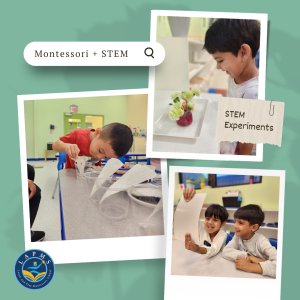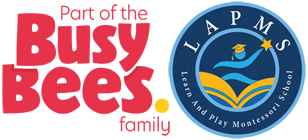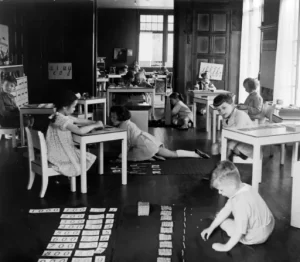Montessori education and STEM (Science, Technology, Engineering, and Mathematics) are powerful tools for nurturing children’s curiosity, critical thinking, and problem-solving abilities. When these two educational philosophies intersect, children experience a dynamic learning environment that ignites their passion for discovery. In this blog, we’ll explore the benefits of Montessori + STEM education and provide a collection of exciting at-home STEM activities to complement your child’s school experience. To learn more about our STEM curriculum, you can take a tour of any of our schools.
At-Home STEM Activities to Enhance the Montessori + STEM Experience
- Weather Watchers: Create a weather journal to record daily observations. Discuss temperature, humidity, and precipitation. Over time, your child will notice patterns and gain a deeper understanding of weather.
- Seed Growth Experiment: Plant seeds in different conditions – some with lots of water, some with minimal water, and some in different soil types. Observe and discuss how each condition affects seed growth.
- Simple Machines at Home: Explore simple machines using household objects. For example, construct a pulley system using a rope, a chair, and a bucket to learn about mechanical advantage.
- Nature Scavenger Hunt: Organize a nature scavenger hunt, encouraging your child to observe and collect different items from the natural world. Discuss the characteristics and functions of these objects.
- Invent with Recyclables: Provide your child with a collection of recyclable materials, and challenge them to invent a useful or creative item. Discuss the engineering principles involved.
Enhancing Montessori + STEM at Home
- Encourage your child’s questions and curiosity. Emphasize that it’s okay not to have all the answers – part of the STEM process is exploring the unknown.
- Create a dedicated STEM workspace at home. This can be a corner of a room or a table stocked with supplies for experiments and projects.
- Keep a science journal. Encourage your child to record their observations, hypotheses, and the results of their experiments.
- Foster critical thinking by discussing everyday STEM-related challenges and problem-solving together.
Montessori + STEM at home creates an environment that extends your child’s learning beyond the classroom, fueling their passion for exploration, discovery, and problem-solving. These experiences help children build a strong foundation in STEM and develop skills that will serve them well throughout their lives.







